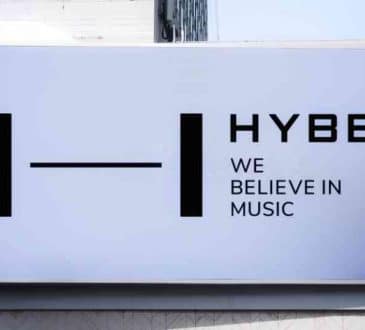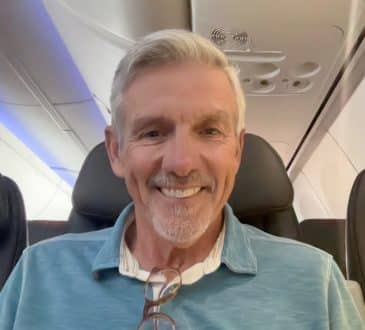What Business Leaders Can Learn from Top Sporting Event Athletes

I’ve yet to speak to a business leader who didn’t think their business was a high-performance environment, but what is often underappreciated is the understanding that high-performance isn’t continually performing at the highest level all the time. Whilst many of us can operate at these very high levels in the short term, for most people it isn’t sustainable in the medium to long term. High performance is understanding the rhythms of your business and being able to manage your energy accordingly, which includes prioritising periods of recovery in the same way an athlete would.
Recently, I had a conversation with someone who asked how they might reconcile this idea with their high-performance culture. My answer was simply that nobody – not even professional athletes – can perform at the very highest level year-round continuously. It might work short-term but it rarely works in the medium-to-long-term.
What can we learn from athletes
Athletes are generally very good at managing their energy and prioritising high-performance. Let’s consider Serena Williams, one of the most decorated athletes of our generation. We all know she’s hugely successful, but even at her elite level, she won’t be ‘Wimbledon fit’ all year round. Williams will be anticipating and preparing for the big events, de-loading and recovering after each big event, before going again.
I believe we can learn a lot from that because business can often feel like an endurance sport with occasional sprints. Or maybe it feels more like an endurance sport with frequent sprints. Either way, wouldn’t it be great if you saw yourself as a corporate athlete, and managed your energy accordingly? That’s the key to high performance and we call this cadence.
Cadence is the key to high-performance
Based on an athlete’s training model, cadence is a simple four step approach to help you manage your energy and optimise for high performance without burning out.
Predict: when are the big events coming up for you
When are your Wimbledons, the big events in your professional life? Often these periods are much more predictable than we think. For a software business this might be a new product launch or a significant bug fix or for an FMCG company it might be ESG goals or integrating a new product line. Could you work with your team to identify these busy periods, and then help them prepare? This idea also applies to our personal lives too; a baby coming into the family, a child going to a new or specialist school or a house move all require energy.
Prepare: small actions have a big impact over time
We often undervalue the impact of small actions when done consistently over time. By focusing on one or two daily non-negotiables in the areas of strength, health, energy, mood or motivation, you can set yourself for success and boost your resilience. Prioritising daily non-negotiables set you up for periods where high performance is required but also keep you in a state of readiness for the unpredictable things that occur in all areas of life.
I want to stress that these actions can be small, but significant when done consistently over time. We tend to underestimate what we can achieve in the short term and overestimate what we can achieve in the long term. Here’s an example.
About a year ago, I received an alert from Apple Fitness. It told me I was burning on average 31 fewer calories per day than the same time a year ago. Initially I thought little of it. What’s 31 calories? It’s nothing. Then it struck me that this adds up. These seemingly small changes might just have a much bigger effect over time. I added it up, and was shocked to learn 31 calories a day equates to 11,315 calories a year. It’s generally accepted that a pound of fat contains 3,500 calories. Therefore, you could argue that a 31-calorie reduction might lead to around 3 pounds of fat gained.
Let’s reverse this example. If I were to burn an additional 31 calories a day, I might expect to lose up to 3 pounds of body fat. This is due to burning an additional 11,315 calories per year. Of course, this is a somewhat reductionist view, and assumes that nothing else changes such as sleep, stress etc. But nonetheless, it does demonstrate the importance of small changes over time.
Perform: but watch for signs of stress or burnout
An important part of cadence is staying vigilant for red flags, indicators that you may be pushing a bit too hard. Learning how to spot and respond to respect these flags ensures you keep chronic stress and burnout at bay.
A few years ago, I woke up on a Monday morning feeling terrible. It felt like an invisible force was pushing me down, pinning me to the mattress as a result. When I tried to open my eyes, I had an aversion to light and could only squint or close them again. My mouth was dry, I felt nauseous and above all, I was incredibly lethargic. Eventually, I peeled myself off the mattress and shuffled downstairs to the bathroom. I had to climb back up the stairs on my hands and knees to get back to bed, which was where I stayed for three days.
At the end of day three I felt slightly better, so went for a short walk in my local park. I soon realised my energy was nowhere near recovered – I had to stop at the benches every 100 metres or so and sit down for a few minutes. It was several days before I felt close to my normal self. Bizarrely, the symptoms returned again after two months and again two months after that. My partner and I called this strange illness the ‘mystery sickness’.
In hindsight, there was no mystery at all. I was simply doing too much and not paying attention to my red flags. These can include physical symptoms such as headaches, unexplained aches and pains and frequent illness such as common colds, and symptoms we associate with mental health such as low mood, anxiety, depression and low self-esteem or self-worth.
Recover: backing off beats burnout
An athlete is as focused on their recovery as they are on their training, and it should be no different for us as corporate athletes. Recovery might include what call slivers of recovery, micro breaks that take just a few minutes at a time but can have a big effect on productivity. (Research by Cornell University showed that taking short breaks boosts concentration, focus and productivity). Examples include a brisk ten-minute walk (proven to boost mood and energy), exposure to natural light, chatting to a colleague or friend, a movement snack or daydreaming out the window to let your mind wander.
See yourself as a corporate athlete
There’s so much we can learn from athletes and apply to the business world, and yet few people are. By applying the principles of cadence, you’re not only giving yourself a competitive edge but also optimising your health and wellbeing. At a time where burnout is increasingly prevalent, this is key. What small changes can you make that help you prepare for busy events and peak times in your business? Instead of going full tilt all the time, we look ahead to the next big event, and have some daily non-negotiables in place to keep you well and in a state of readiness for the next business challenge.
Written by Leanne Spencer.
Have you read?
Alexandre de Vigan: Nfinite aims to become the global leader in synthetic image creation.
Why improving soft skills is key to leadership success.
Why emotional fitness is a vital leadership skill.
My Misconceptions About Earning Career Success And How I Eventually Got it Right.
Hard-Earned Leadership Lessons from 35 Years on the Razor’s Edge.
Add CEOWORLD magazine to your Google News feed.
Follow CEOWORLD magazine headlines on: Google News, LinkedIn, Twitter, and Facebook.
Copyright 2024 The CEOWORLD magazine. All rights reserved. This material (and any extract from it) must not be copied, redistributed or placed on any website, without CEOWORLD magazine' prior written consent. For media queries, please contact: info@ceoworld.biz








